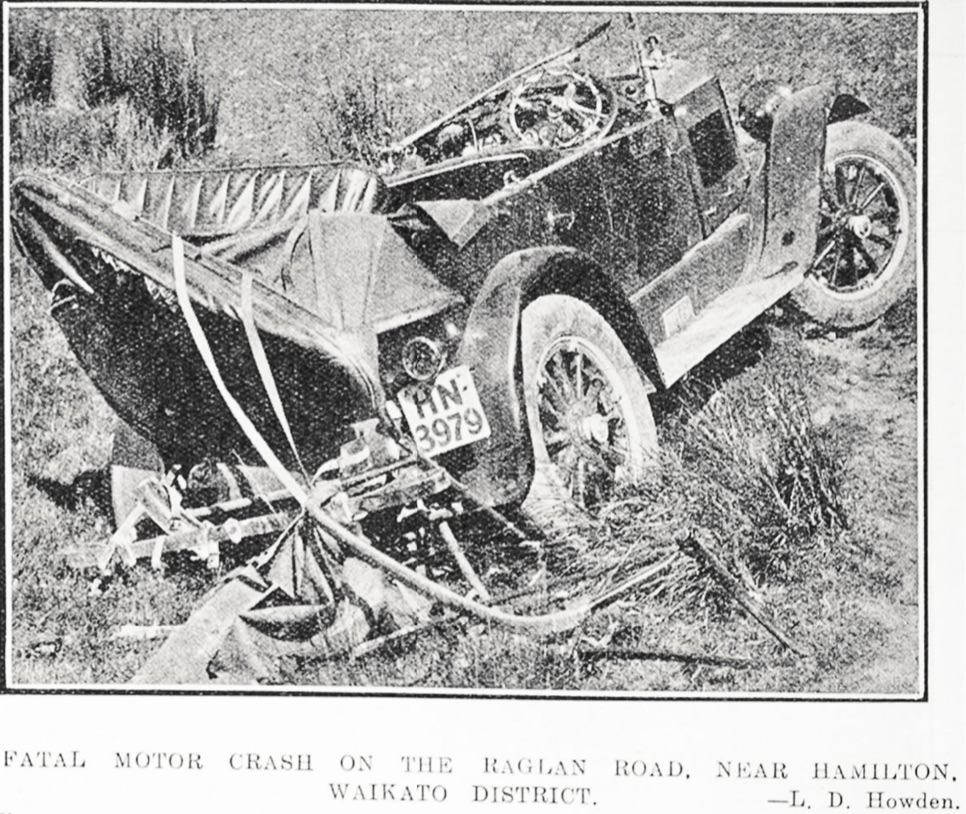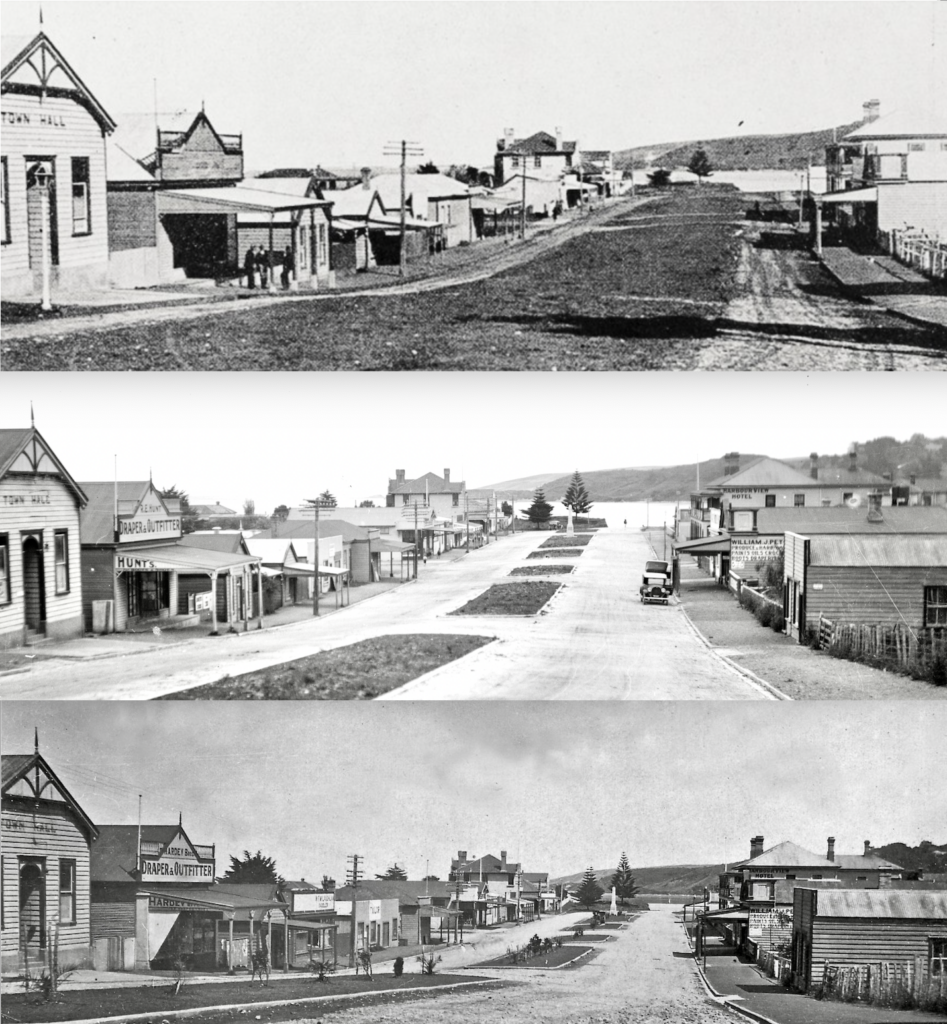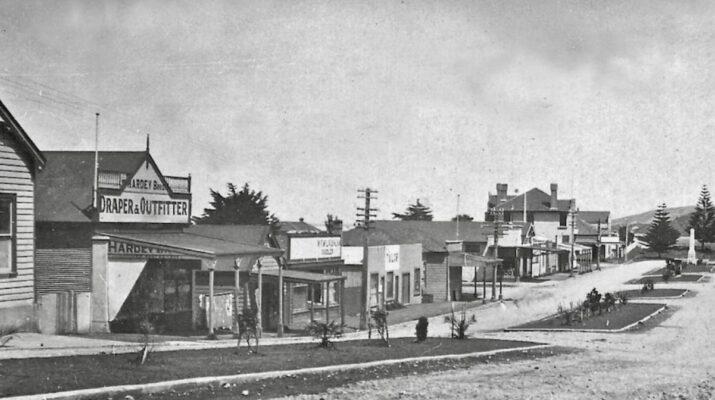Continuing our occasional history series, we look back to Whāingaroa a century ago – 1925
1925 Part 2: Timber by steamer, roads and Bow Street
by John Lawson
.Jim Meekings built Makomako school in 1925. As it was before those road works, the timber came to Raglan by steamer, went by Porter’s trucks to Pakoka Bridge and from there the Waitere family steered it across the harbour and up the stream, using poles on incoming tides. The school started on 26 October 1925 with 31 girls and 16 boys. It closed in 1984.
The next largest Public Works amount was £1,438 for the Hamilton-Raglan road, including work on the Waipa Bridge at Whatawhata (there was nearly a foot between the bridge and the road level and it was “a sea of slush” in wet weather) and spreading 2 inch blue metal from the 10- and 16-mile quarries over 3 miles of the road. However, in November Raglan County limited the total weight of lorries to 6 tons on that road and 4 tons on all other roads.
Other road works included the Kauroa butter factory-Te Mata road (blue metal from Nicholson’s quarry was used to complete Te Mata road’s metalling and in February 1925 Mrs A. E. Jerome cut a ribbon and there was a celebration at Jerome corner), metalled approaches to the single lane Opotoru bridge, the first 5km of earthworks on Waitetuna Valley Rd and work on Te Akau Wharf, Waingaro Springs-Te Uku, O’Shea’s, Pond’s, Phillips, Ruapuke Mountain and Te Maari roads.
Some of the money came from taxes on lorries and in July Raglan County refuted the motor association’s view that the tax was wasted. In 1924 Raglan County had 480 miles of roads, 300 of them mud roads with a book value of £3,691,867. In the year ending 31 March 1925, County salaries (including, Health Inspector), were £1541 0s 6d; expenses for members attending meetings, £260; audit, licensing, valuation, postage and office expenses, £234 4s 11d; printing, advertising and stationery, £234 3s 11d; fire insurance, £33 14s; legal expenses, £94 10s 9d; upkeep of cars, total £2815 12s 6d. On total receipts of £50,300, including clerk’s and engineer’s departments, administration cost 5¾%, road works cost £41,990 9s 9d and surveys £1334 18s 5d.
Also in 1925, Raglan County bought a Porter steam roller for £1060, 2 more graders, took a £1500 loan to complete metalling on Okete road, laid metal at the start of Hills road and spent £10 on Van Houtte’s Rd.

2024’s road toll was the lowest in proportion to the population since 1920. 1925 on Raglan’s roads was probably typical of the crashes that year. In January Mrs Mona Fraser Tyler, 31, died on the Deviation after visiting a beach cottage being built for the family. To pass a large black car, they pulled to the side of the road, but the car was travelling too fast, slid 18 or 20 yards into loose metal and rolled over the bank. In February, Ernest Alexander Cooper was charged with dangerous driving around a corner near Te Uku, not keeping left and not giving his name and address. He was fined £15. In March E. W. Body, another Hamilton driver, tried to pass a gig, but got into soft ground and the car went over a small bank and overturned. In April a Hamilton taxi collided with W. G. Robertson’s mail car at a bad corner near the summit. The magistrate said it was purely accidental. On 31 August, on the Raglan deviation, a Hudson car, driven by Miss P. H. Noffke, towards Hamilton, met a motor cycle came on a bend and swerved out, so no one was hurt. There were 2 other crashes in August; Mr Ellis, Hamilton, collided with Mr Bagnell, Te Uku, on the Raglan side of the deviation and Mr S. Ellis, Auckland, collided with Rev. A. M. Aspland, Frankton, at a bad corner near the top of the Deviation. Mrs Aspland shot through the windscreen, was badly cut and unconscious, but the report said “is doing quite well”.
In January 1925 there was, “increased activity this season in the establishment of summer seaside cottages at Raglan. A number of Hamilton residents have built houses in which their families spend the summer school vacations while the business men motor over for week-ends, a run of about 1½ hours, the roads being in exceptionally good condition. . . and great numbers of cars sped down white streets”, presumably a reference to the 1924 rebuilding of Bow St with limestone. In 1925 Raglan Town Board tarred and sanded the footpaths.

The wide grassed area went in 1924 and was planted in 1925
In March the plots in Bow street, which had been created as islands in the widened roads the previous October, were grassed. In July the Raglan Beautifying Society (formed in 1918) decided to plant them with Phoenix (now the main type of tree), canariensis and fan palms, euonymus, liquid amber, copper beech, aemena, floribunda, karaka, puriri, Cape silver leaf, pohutukawa, flowering gum, rhus and silver wattle and enclose them with ferro-concrete posts, piping and wire, for £19. In the lower photo there seem to be newly planted trees. In December Raglan’s big gun “Bertha” was reported as placed in Bow St “without further opposition”. Possibly it was a captured machine gun, as one was given to Raglan in 1920. As the photos show, Hardey Brothers, took a lease on Reg Hunt’s drapery shop in about 1925.

